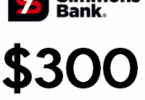(Update 5/2/24: Rate ends up being 4.28% total: 2.98% variable and 1.30% fixed. This is roughly the numbers discussed in the post, below, which was written before we had the final numbers.)
We’ve been reporting on the twice-per-year I Bond rate releases. The new rate for May through October 2024 is slated to be 2.96%, based on inflation reports. Additionally, guesses/predictions are that the fixed rate will be around 1.30%. That gives a total rate of around 4.30% for 6 months.
Contents
What This Means
What this means: If you already own I Bonds and keep them, you’ll get just 2.96% interest rate for the six month rate period of May 2024 through October 2024. (The exception to that would be if you get a fixed rate from a previous buy in which case it would be higher.) If you buy new I Bonds (or I Bond gift box) between May 2024 and October 2024, you’ll likely get around 4.30% for the first six months (2.96% + 1.30%). After the six months is over, you’ll probably get around 1.30% added to any future variable rate.
For comparison sake: the current rate which runs November 2023 through April 2024 is 5.27% – that comes from a 1.30% fixed rate and 3.97% variable rate.
Should You Buy I Bonds?
Should you buy I-Bonds now at the 5.27% rate?
Personally, at the current rates, I wouldn’t buy now for the purpose of getting a good interest rate over the next year or two. In the short term, the 5.27% rate is not much better than US treasuries or the best high yield accounts are getting. And the subsequent 4.27% rate, along with a 3 month penalty, doesn’t look too attractive. (Of course we are just spitballing here since we don’t know what high yield savings accounts will be 6 months from now.)
I’d primarily consider buying for the long-term play of having 1.30% locked-in above inflation. In recent years we haven’t seen any sort of fixed rates being offered at all, and getting a 1.30% secured above inflation for the long haul can be interesting as part of a diversified portfolio. I Bonds can even be a sort of long-term emergency fund (just bear in mind that the first 12 months the money is inaccessible).
Someone who feels confident that they’ll be holding cash for the long term at regular interest rates might considering buying I Bonds now to lock a guaranteed 1.30% rate above inflation.
Should You Buy I Bonds Now?
If you decide to buy I Bonds (see above), should you buy now or wait until the rate resets in May?
If you want to buy, it would seem better to buy now instead of waiting for later in the year. While the fixed rate might be similar in May, the variable rate will be lower. It could make sense to lock in 6 months at the respectable 5.27% rate.
If you already get 5%+ in your savings account, it might not be a major gain to switch to I Bonds. Someone who wants the 1.30% fixed rate as a long term investment, but wants to punt the decision for later, might consider waiting until October and buying then. Since the estimated upcoming fixed rate is estimated to be about the same, there probably won’t be a long term loss in waiting.
Note, however, we probably won’t get official word on what the fixed rate will be until after it’s too late to buy at current rates. And so ultimately, a lot of people who are interested in the long term I Bonds investment will prefer locking in the current high 1.3% fixed rate now.
Should You Sell I Bonds Now?
A lot of us have older I Bonds with no fixed interest rate. We’re just getting the variable rates on those older investments, as they come out each 6 months.
Someone who is holding older I Bonds, and does not want to increase their overall I Bonds holdings. Should they sell off the older ones and buy in at the new rate which includes the extra 1.30% fixed component? Yes, in most instances you’ll probably want to that.
There are lots of factors that gone into this, most importantly the 3 month penalty assessed for cashing out in less than 5 years:
- Someone who bought I Bonds in the past few years will probably prefer to swallow the 3 month penalty and lock in the extra 1.3% fixed rate.
- Someone who is close to the 5-year mark has a tougher decision. Anyone with I Bonds more than 5 years old that has no fixed rate will most likely want to cash out the old ones and buy new. Just don’t forget about the $10,000 annual limit! You don’t want to sell off $20,000 if you can only buy back $10,000 (see some tricks here).
List of Past I-Bonds Rates
For context, here is a review of past I Bond rates that many of us bought into:
- May 2021 through October 2021 – 3.54%
- November 2021 through April 2022 – 7.12%
- May 2022 through October 2022 – 9.62%
- November 2022 through April 2023 – 6.48% (6.89%)
- May 2023 through October 2023 – 3.40% (4.30%)
- November 2023 through April 2024 – 3.97% (5.27%)
- May 2023 through October 2024: 2.98% (4.28%)






